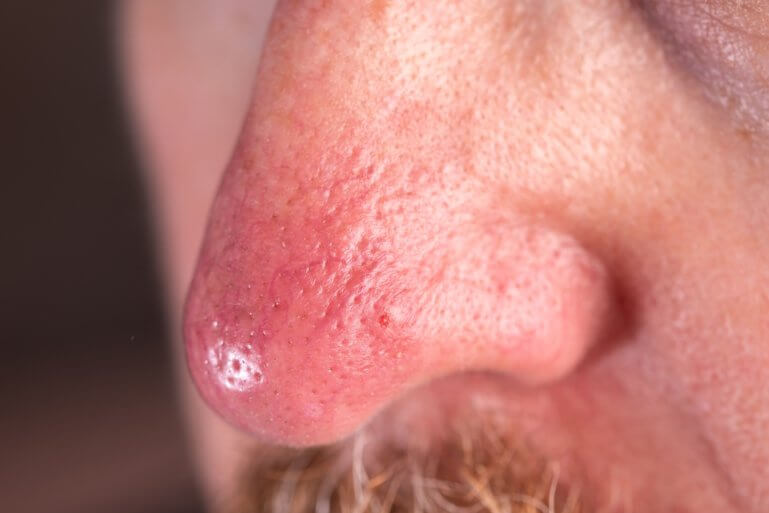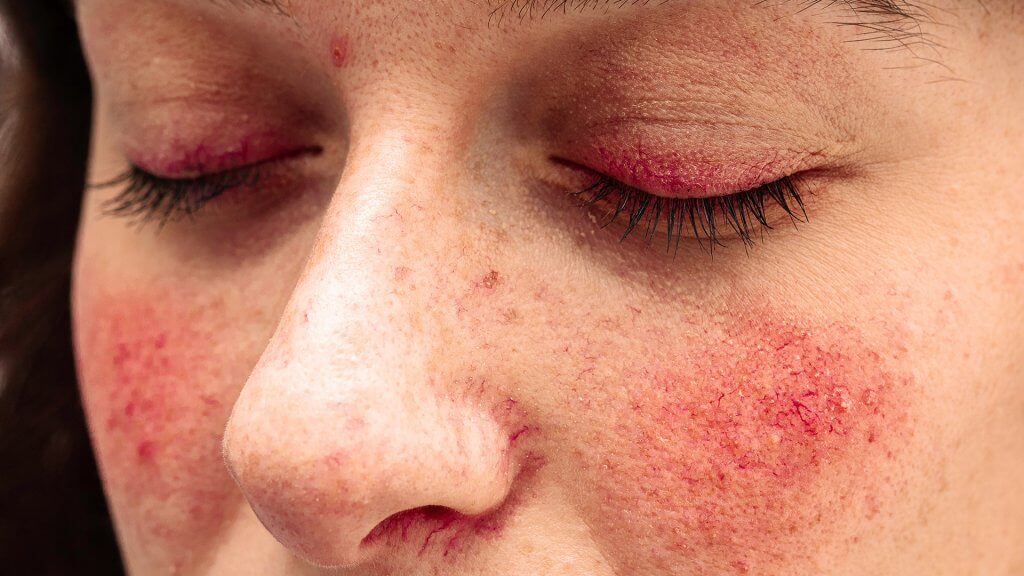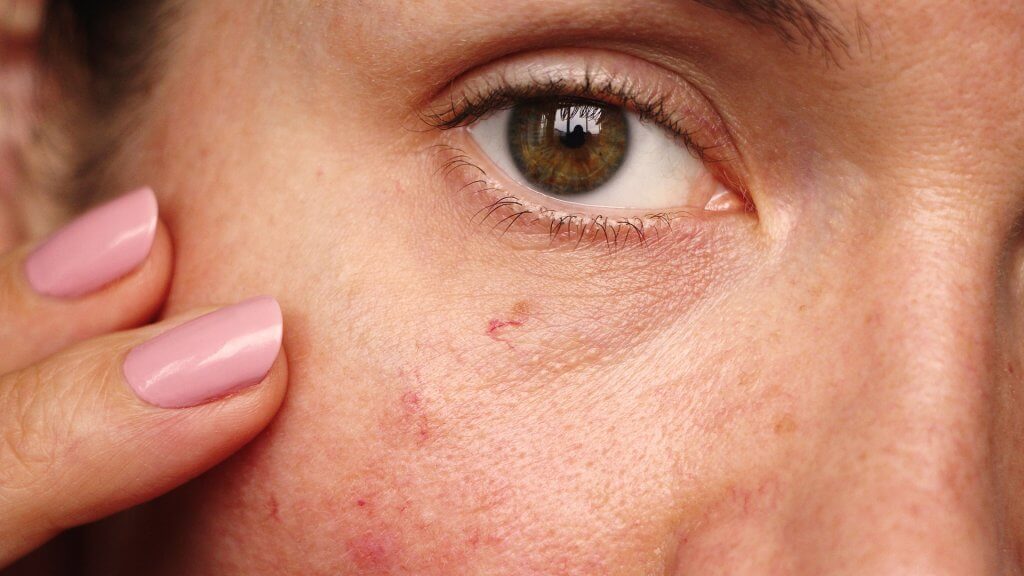Reduziere Rosacea
mit Sanubiom SkinCare Protect mit Phage Technology
Rosacea

Stage I – initial stage of rosacea: A temporary reddening of the nose and other areas of the face such as the forehead, cheeks and chin. This reddening is also known as a “flush”.
Stage II – permanently reddened skin: Permanent redness and blotchiness on the nose and the rest of the face. Typical symptoms are itching, pain and burning of the skin. The nose is affected by dilated blood vessels and visible veins.
Stage III – Nodule formation: Acne-like pustules and papules develop. Due to the increased sebaceous glands and connective tissue activity, the nose and cheeks are affected by swelling and nodules. Men over the age of 50 are particularly affected by a so-called bulbous nose (rhinophyma).


The reddening of the skin stabilizes and does not disappear completely, but remains permanently. Small veins form on the cheeks, which are visible to varying degrees depending on the patient. However, SkinCare Protect can help to reduce redness.
The exact causes of rosacea are still not clearly understood. The chronic skin disease progresses in episodes and a genetic predisposition apparently leads to a disruption of the immune defense and regulation of the blood vessels in the skin. There is a 6-fold increase in the number of Demodex mites on the skin of the affected persons, which is probably responsible for the inflammation.
In addition to genes, triggers that lead to rosacea on the nose include unsuitable skin care products, heat, alcohol or coffee consumption, stress, spicy food and UV radiation.
In order to get the typical symptoms under control at an early stage, it is recommended to treat the nose and surrounding areas with SkinCare Protect 2-3 times a day. In addition, the skin should be sufficiently moisturized. SkinCare Sensitive is the perfect nutrient and moisturizer for the skin. The special composition promotes the skin’s moisture balance and reduces itching and redness.
You should also seek medical advice at the latest if the redness is permanent. In stage 3, systematic therapy may be useful in addition to local treatment.
If you have skin prone to rosacea, you should always pay attention to the ingredients of skin care products so as not to aggravate the symptoms.
The face should be cleaned with lukewarm water. Care should be taken to avoid extreme water temperatures and rapid successive temperature changes in order to avoid sudden reddening of the skin.
Facial scrubs should also not be used for rosacea, as they can only irritate the skin even more. In addition, care and washing products without camphor, sodium laurysulphate, menthol and astringents should be used. The water should not have a high degree of hardness and the face should be gently dabbed with a towel after washing instead of rubbed dry.
You should also use water with a slightly acidic pH value.
The most important points in skin care for rosacea on the nose:
The skin should always be supplied with sufficient moisture to protect it from drying out. To allow the skin to breathe under the cream, you should use creams or lotions which, unlike ointments, have a higher water content. Lotions contain even more water than fat and are therefore also known as oil-in-water emulsions.
In order not to promote the inflammatory processes that trigger rosacea, those affected should pay attention to their diet. Sugar, wheat, meat and cow’s milk should be completely avoided or reduced to a minimum. Pork and sausages in particular promote inflammation in the body. For people who are overweight, a reduction in body weight can have a positive effect on the disease.
A low-inflammatory diet consists of dishes with lots of vegetables and probiotics should be used to strengthen the immune system. These include in particular foods that contain lactic acid bacteria and yeasts, for example sauerkraut, yogurt and buttermilk.
You can find more information about nutrition and rosacea in our article here: Nutrition for rosacea
Author: Katharina Hillinger
“Our skin nourishes, detoxifies and protects our body. But in order for it to fulfill its functions, our skin flora must be in balance. Healthy skin is characterized by a diverse ecosystem of microbes that form a kind of protective shield.”
Share post:
1.Moller AG, Lindsay JA, Read TD. Determinants of Phage Host Range in Staphylococcus Species. Johnson KN, ed. Appl Environ Microbiol. Published online June 2019. doi:10.1128/aem.00209-19